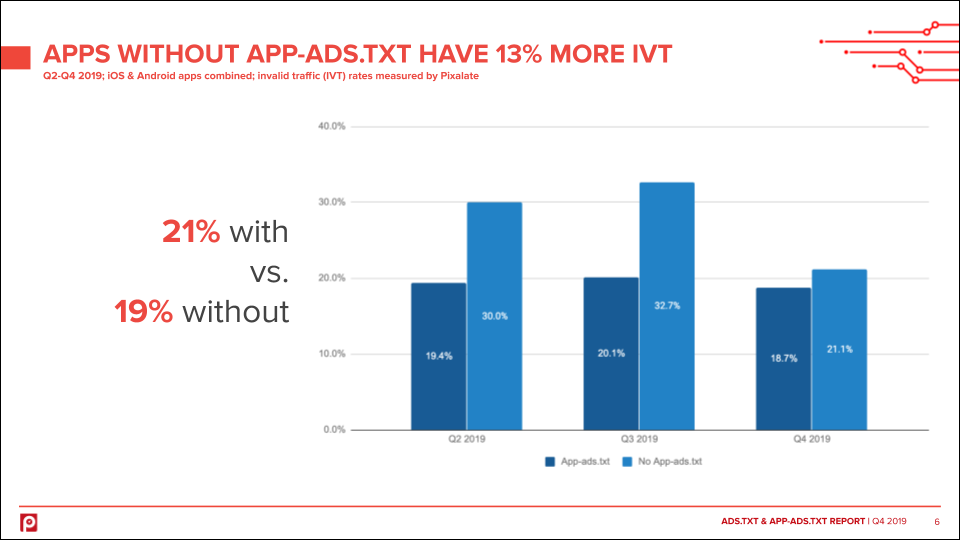
Pixalate's 2019 App-ads.txt and Ads.txt Trends Report updates programmatic buyers and sellers on the latest trends around the IAB Tech Lab's initiatives.
Today, we're taking a look at the possible impact of app-ads.txt on invalid traffic (IVT).
According to Pixalate's data, apps with app-ads.txt have 13% less IVT compared to apps without the file, as of Q4 2019.
Here are the total IVT rates on apps with versus without app-ads.txt, broken down by quarter:
The difference in Q4 2019 equates to about 13% more IVT on apps without app-ads.txt compared to those that have adopted the initiative.
Pixalate's 2019 App-ads.txt & Ads.txt Report
Pixalate’s 2019 App-ads.txt and Ads.txt Trends Report includes:
Download a free copy of the 2019 App-ads.txt and Ads.txt Trends Report today.
*By entering your email address and clicking Subscribe, you are agreeing to our Terms of Use and Privacy Policy.
These Stories on Mobile
*By entering your email address and clicking Subscribe, you are agreeing to our Terms of Use and Privacy Policy.

Disclaimer: The content of this page reflects Pixalate’s opinions with respect to the factors that Pixalate believes can be useful to the digital media industry. Any proprietary data shared is grounded in Pixalate’s proprietary technology and analytics, which Pixalate is continuously evaluating and updating. Any references to outside sources should not be construed as endorsements. Pixalate’s opinions are just that - opinion, not facts or guarantees.
Per the MRC, “'Fraud' is not intended to represent fraud as defined in various laws, statutes and ordinances or as conventionally used in U.S. Court or other legal proceedings, but rather a custom definition strictly for advertising measurement purposes. Also per the MRC, “‘Invalid Traffic’ is defined generally as traffic that does not meet certain ad serving quality or completeness criteria, or otherwise does not represent legitimate ad traffic that should be included in measurement counts. Among the reasons why ad traffic may be deemed invalid is it is a result of non-human traffic (spiders, bots, etc.), or activity designed to produce fraudulent traffic.”

